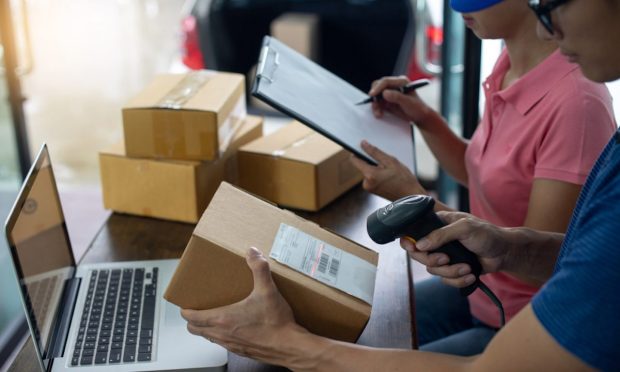eCommerce Startups Struggle to Scale Logistics Capabilities to Meet Demand Surge

The accelerated adoption of eCommerce over the past 18 months has created a potentially lucrative space for newcomers looking to reach shoppers. Brand loyalty is falling, according to several industry watchers, and nearly 84% of consumers who used online shopping during the pandemic plan to maintain their new habits, according to PYMNTS research.
Maggie Barnett, chief operating officer at ShipHero, said that when it comes to startups scaling operations, “eCommerce logistics is tough,” especially at a moment when hundreds of container ships are waiting offshore at ports around the world.
“Finding great products and learning how to do Facebook ads and Instagram ads and TikTok, that’s one thing. … But when it comes down to it, getting your product in right now, it’s brutal,” she told PYMNTS in a recent interview.
Related news: Retailers Face ‘18-Month Struggle’ as Global Supply Chains Remain Tangled
On top of that, Barnett said, many eCommerce startups struggle to scale their operations from printing a few dozen labels in a home office to shipping thousands of orders per month. “You have more SKUs, you need some more robust tools to keep your warehouse efficient,” she said. “That’s where it gets hard, that step up from, ‘this is a hobby or side hustle,’ to, ‘wow, I can make money and do this full-time.’”
Some people try to eschew using a warehouse management system (WMS) because they’re intimidated and feel like it’s a big commitment for a startup, but Barnett said it’s important for eCommerce merchants to have some basic tools beyond label printing.
“That’s one of the hardest things I see for merchants: being able to see ahead, see that scale, and make that investment ahead of time — not just monetarily, but also timewise,” Barnett said.
ShipHero recently launched a new year-long accelerator program to help guide eCommerce startups through some of these challenges, selecting five businesses per quarter for a total of 20 in the first year. Startups will receive one-on-one mentorship, discounted access to ShipHero’s software and monthly roundtable sessions with other participants to discuss issues they’re experiencing.
“You need a team to be successful in this world,” Barnett said. “Otherwise, big brands are going to eat you alive on the margins and the economics. So having a good team in place and the right tools, that’s how these folks are going to break through.”
The launch of the accelerator program follows ShipHero’s $50 million fundraising that closed in June, the first round of funding in the company’s eight-year history.
“This is kind of the natural next step post-funding, to help … those underrepresented brands,” Barnett said. “We’re not here to say, ‘Oh, let’s work with these brands.’ It’s where we think we can really pull levers to help them.”
Supply Chain Issues Across the Board
Startups aren’t the only ones feeling supply chain pressures. Nike executives said last month that transit times in North America are now almost twice as long as they were prior to the pandemic, primarily because of port and rail congestion as well as labor shortages. And Crocs CEO Andrew Rees said in August that transit times from Asia are approximately double their historical level, something the company is expecting to live with.
See also: Factory Closures Cause 10+ Weeks of Lost Production for Nike
Some companies, including toymakers such as Hasbro and Mattel, have said they will work with more ocean and air freight carriers, utilize more ports and source products earlier from multiple countries to ensure product availability, especially ahead of the holiday season. But there’s only so much capacity, meaning some brands might be left waiting at the dock if they aren’t already ahead.
Raj Patel, senior director of 3PL industry strategy at Blue Yonder, told PYMNTS in an interview that brands need to be more agile and resilient, as supply chain issues are likely to stick around for at least another year.
“We don’t know what the next 18 months are going to hold,” Patel said. “Is the trend going to continue? Is it going to change? What’s going to be the next thing? It’s hard to predict.”
